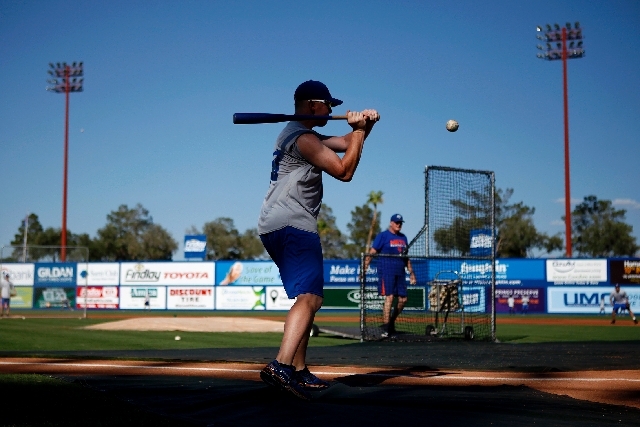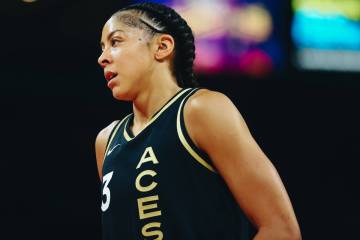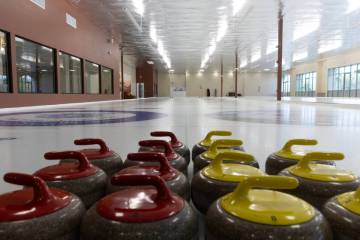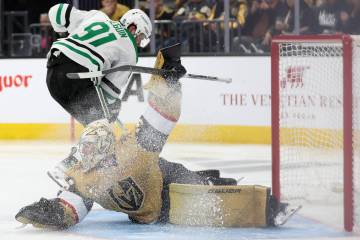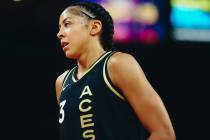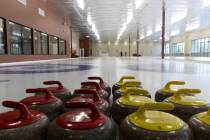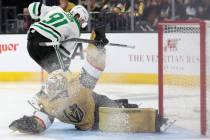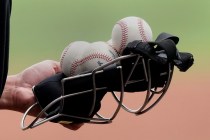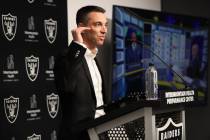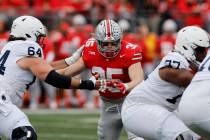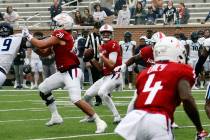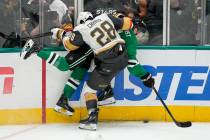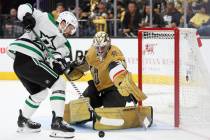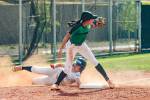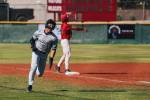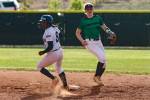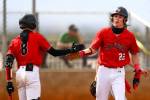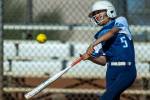Heads up! Batting practice often symphony of chaos
Baseball is full of routines, and batting practice is one age-old ritual that players rely on to help prepare them for each day’s game.
“Some guys, if they don’t go out there and hit on the field, they feel lost in their first at-bat,” 51s manager Wally Backman said. “I think it’s very important.”
Batting practice has been described as organized chaos and likened to a well-orchestrated symphony when all the moving parts mesh together in perfect sync.
But amid the bevy of balls being belted by batters taking practice and coaches hitting grounders to infielders from both sides of the batting cage, a line drive inevitably smokes someone.
It happened to Backman, for the first time in his career, two years ago when he was shagging fly balls with coaches during the first day of spring training for the New York Mets.
“A guy hit a foul ball, and it hit me right in the (bleeping) toe. It hurt like a (bleep),” he said. “Most of the time when a guy gets hit they’re not paying attention, but you can look away for five seconds and get hit by the ball.”
When someone gets drilled during batting practice — aka “BP” — Las Vegas outfielder Jamie Hoffmann playfully will yell, “This is a work area.”
“We say that as kind of a joke if you don’t pay attention,” he said. “There’s a lot going on out there.”
A BP line drive smoked 51s infielder Wilmer Flores on his ankle a couple of years ago, and he suffered a sprained ankle July 13 when he was turning double plays at second base during BP and inadvertently stepped on a ball.
“It was a ball on the way, and I didn’t see it,” he said. “This game is not easy. You can get hurt anytime.”
Flores, who missed the Triple-A All-Star Game because of the injury and was on the disabled list from July 16 until Tuesday, said BP is an integral part of the game.
“That’s the closest thing to a game, to a pitcher, so you can get your timing and your mechanics right,” he said. “You slow down the game a little bit. That’s what I try to do.”
Aside from the days on which BP is shortened or canceled because of the weather or travel issues, the 51s usually start their 50-minute BP session at 4:15 p.m. at home and 5:15 p.m. on the road.
The players are split into three groups of no more than five, with Backman, hitting coach George Greer and pitching coach Randy St. Claire splitting pitching duties. Backman throws to the first group (the backups at home and starters on the road), St. Claire throws to the second group and Greer to the third.
The BP pitcher throws to hitters in the batting cage from between the pitcher’s mound and home plate. Simultaneously, coaches stationed on both sides of the cage hit ground balls to third base, shortstop, second and first, while pitchers and outfielders shag flies in the outfield. Pitchers and players from the other team also might be playing catch and/or stretching in the outfield during BP, when the symphony is in full swing.
Screens are placed in front of the pitcher and in front of first base as well as in front of and behind second base — to protect the second baseman and the previous game’s starting pitcher, who is “on the bucket” of balls shagged in the outfield.
To allow fielders to protect themselves, coaches wait until the moment after the batter makes contact to hit balls to the infield.
“The batter usually says, ‘Coming out,’ ” Greer said. “He’s supposed to say it loud enough so the fungo hitters can hear him.”
While most casual baseball observers probably assume BP is nothing more than a version of Home Run Derby, that’s not the case.
When Greer played for the St. Louis Cardinals’ organization, his hitting coach, Joe “Ducky” Medwick — the last National League player to win the Triple Crown, in 1937 — forbade home runs in BP.
“If you hit the ball out in batting practice and he felt you were trying to hit one out, that would end your particular round,” Greer said. “He wanted guys to hit line drives and wherever it was pitched.”
Likewise, Greer and the Mets have a specific game plan for BP.
“What we like to do as an organization is get at least 27 swings through different modes and methods,” he said.
Each player will begin BP by dropping down a bunt on the first-base line and third-base line before taking five to seven swings in the first of his four rounds of BP.
The second round is referred to as the “routine round,” in which batters work on their situational hitting, including hit and run, moving runners over, infield back, infield in and squeeze.
“It’s all about situational hitting,” Backman said. “Those are the things they have to learn to do because the little things are what win you a championship, there’s no question for me.
“We really try to make players take it seriously because it’s a big part of the game.”
The third round is a 2-and-0 and 3-and-1 pitch round, Greer said, in which hitters can hone in on areas of the strike zone on which they want to work, and the final round is “coach’s choice.”
“The last round can be anything,” Greer said. “Gap to gap, I want everything up the middle or hit the ball where it’s pitched.”
Greer, who once saw an outfielder and a pitcher knock each other unconscious during a collision in BP, said it isn’t essential to a team’s success.
“In some cases, I don’t think it’s very important,” he said. “I’ve seen teams not take BP because they got to the field late and get 15 hits, and the next night they have a great round of BP and the score’s 1-0 with two hits and 10 strikeouts.
“It’s a routine. If a player in any sport thinks something’s effective for him, it’s effective. It’s more of a timing and confidence issue.”
Hoffmann said he works on several parts of his swing during BP.
“If I’m not feeling my legs one day, I’ll work on trying to feel my legs. If my hands are slow, I’ll work on that,” he said. “It’s a feel thing. It’s constant maintenance on your swing.”
It’s also a work area.
Contact reporter Todd Dewey at tdewey@reviewjournal.com or 702-383-0354.





